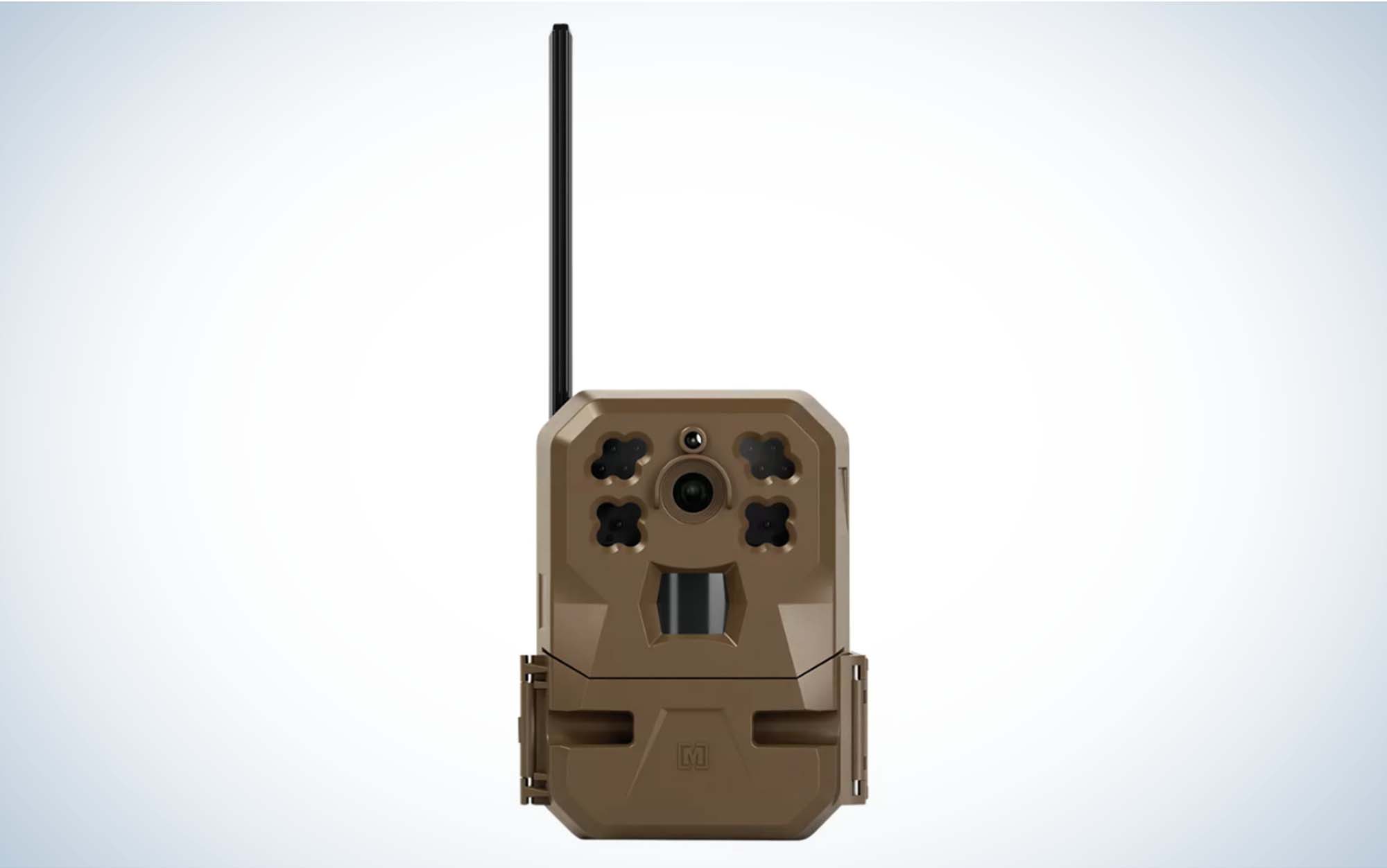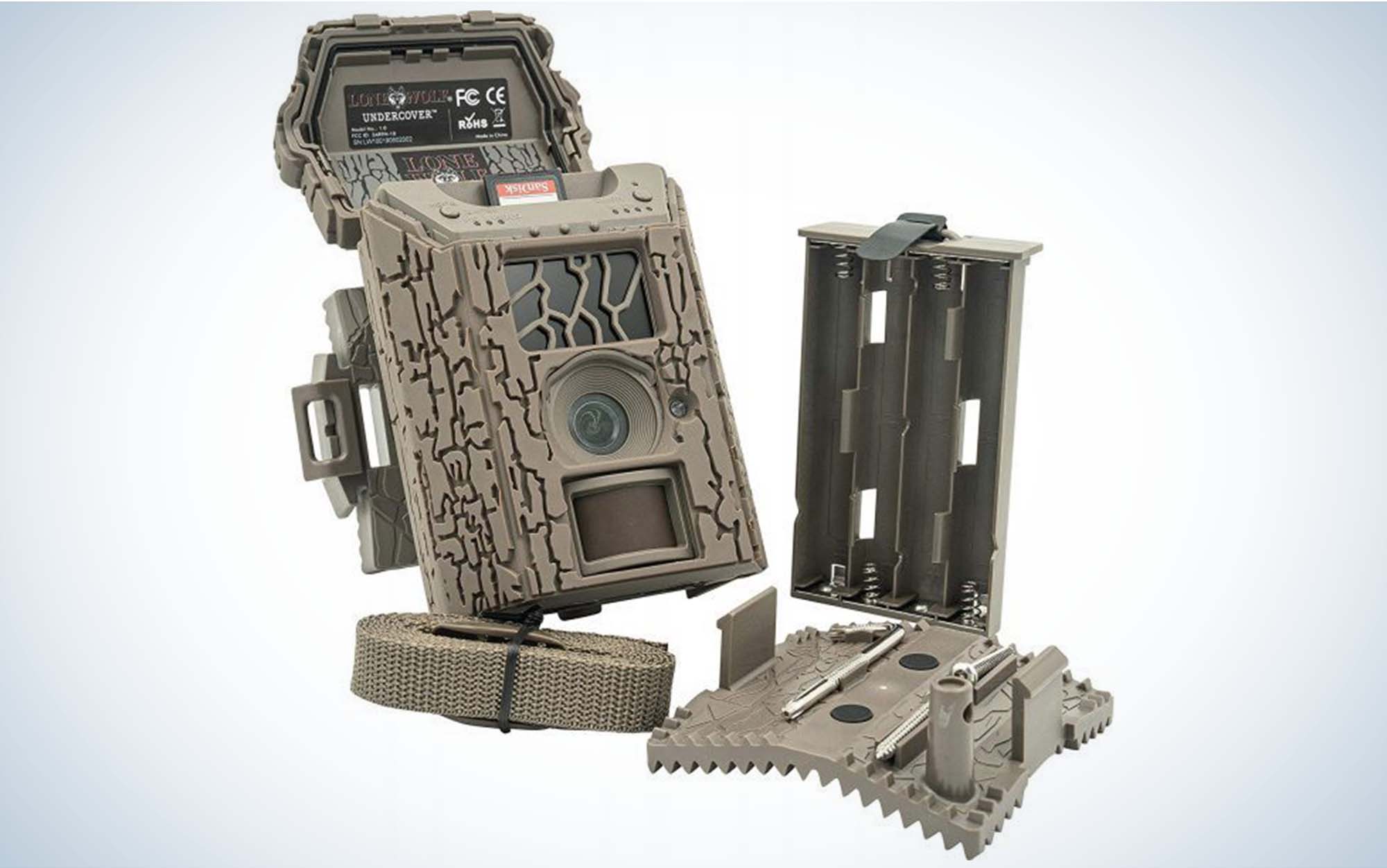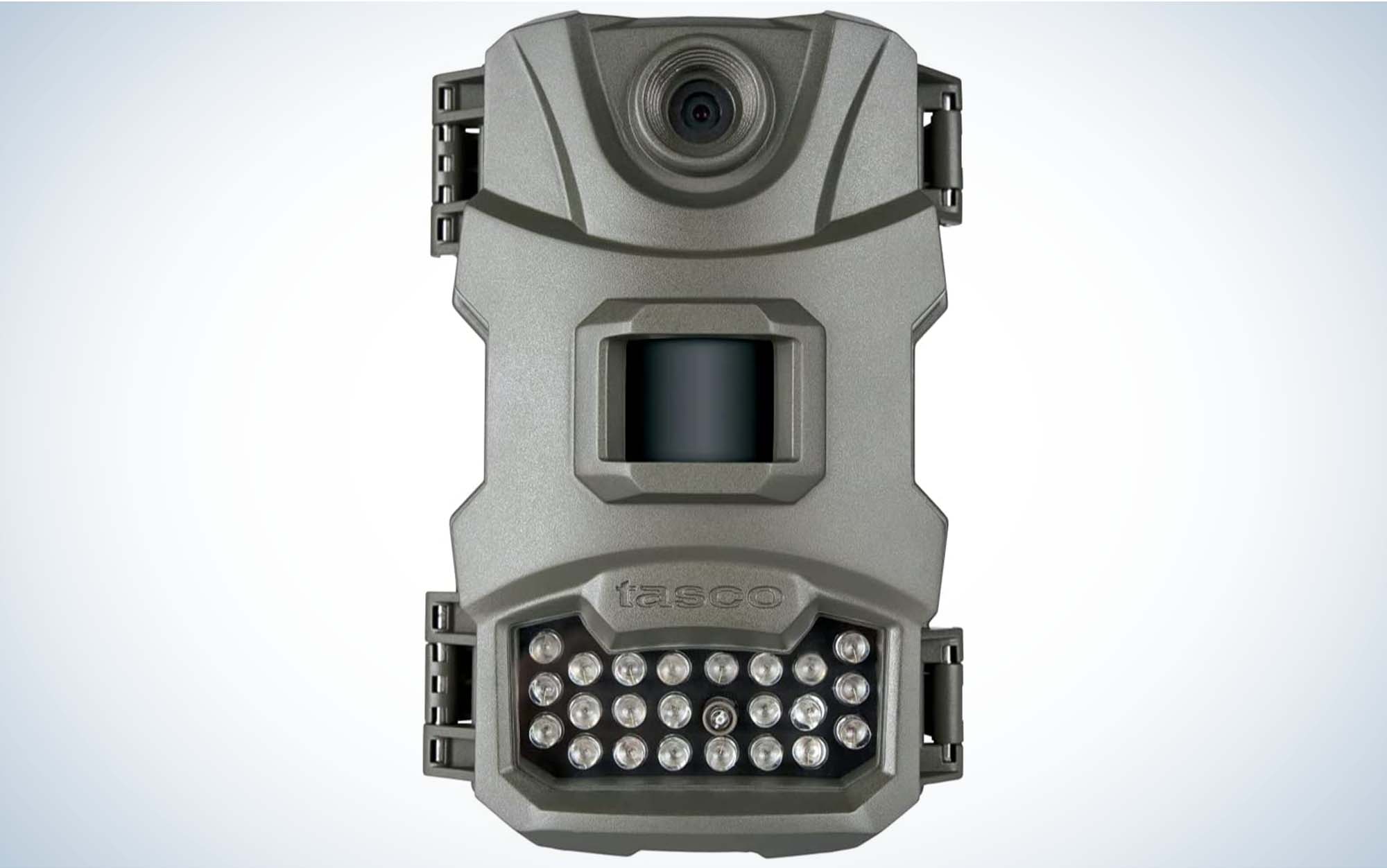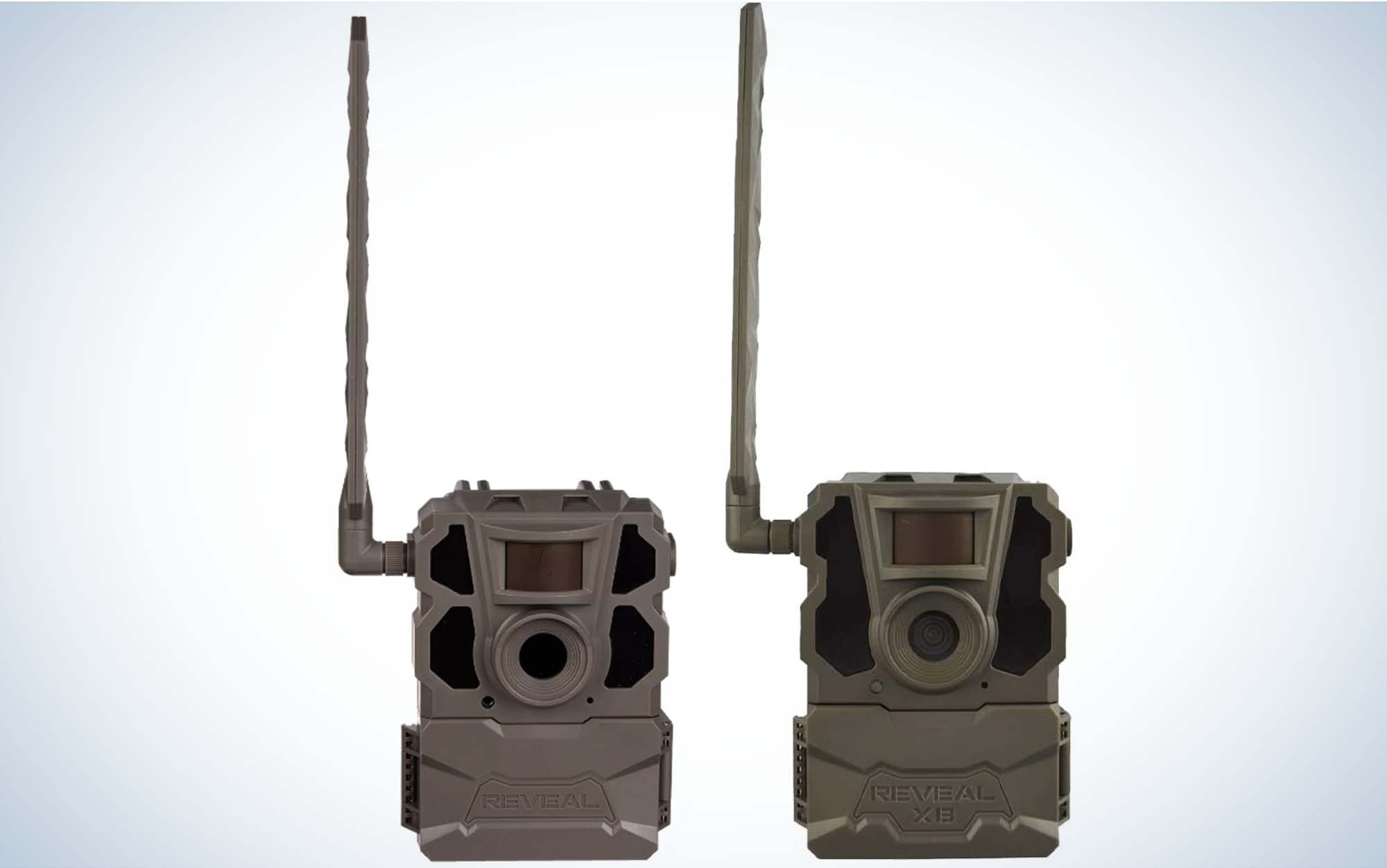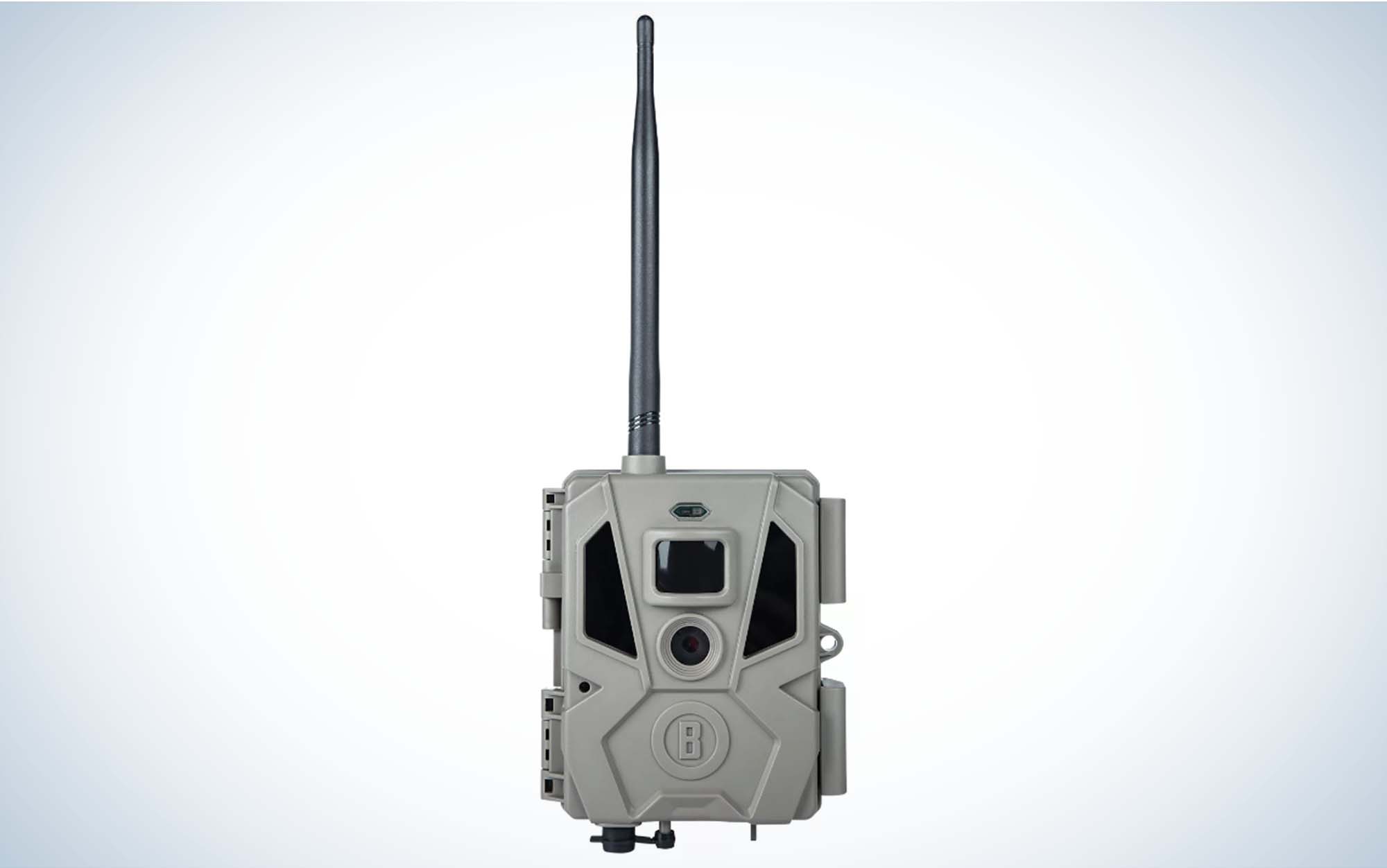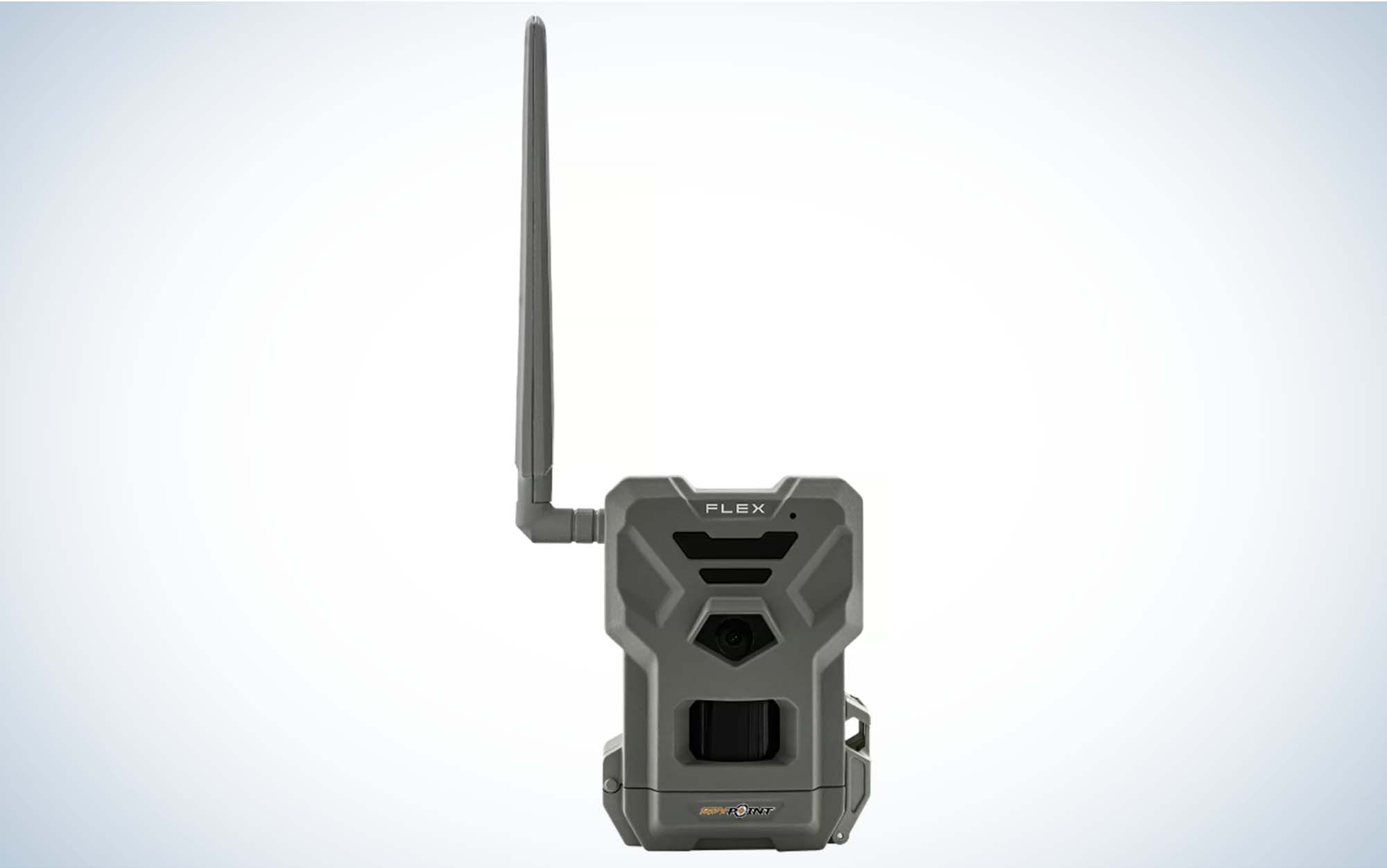We may earn revenue from the products available on this page and participate in affiliate programs. Learn More ›
Updated May 16, 2023 4:00 PM
If you break into a cold sweat at the thought of leaving a $500 trail camera on public land, you’re not alone. Those high-dollar cameras take great photos, but they’re overkill for most hunters’ needs.
After all, you can get a great trail cam for under $150 and it’ll still have top-end features like video, quality photo, long battery life, and cellular connectivity. To help you find the best budget trail camera, a team of three hardcore whitetail hunters spent months testing the trail cameras in the field and in a standardized backyard test. Here are the team’s top picks at the end of testing.
How We Tested the Best Budget Trail Cameras
Testing Trigger Speed, Flash Range, and Detection Range
Each of the best budget trail cameras was set to its fastest shooting mode and highest sensitivity. Markers were placed at 10 feet, 60 feet, and 110 feet. Then the tester walked past the camera (left to right and then right to left) at a medium pace at the distance of each marker. This test was conducted during daylight and at night.
The test measures the camera’s detection range, trigger speed, shutter speed, and flash range. We looked for blank photos, failures to trigger, blurry images, and overall photo quality.
In the Field
Each camera was set out in the field to see how it performed in the real world and stood up to the elements. In the field testing ran from three weeks to six months. In the field, we evaluated the camera’s photo quality, reliability, and ease of setup.
Price
Trail camera’s range from about $30 to $600 with a lot of variance in price and features in between. We decided to make the cut off for a “budget” camera at 25 percent of the most expensive camera, $150. You’ll notice that most of the cameras in this review still cost about $100 or more. That’s because the truly cheap cameras typically deliver cheap performance. They fail to trigger, they spook deer, or they die after a season of use. You can spend more money replacing cheap cameras than you would by buying a few quality cameras. The trail cameras in our list still feature advanced features like video, infrared flash, cellular connection, and quality images. But, they lack the sting when you buy multiples or one goes missing.
The Test Team and Locations
Scott Einsmann, gear editor, Virginia
Drew Palmer, contributor, Kansas
Alex Robinson, editor-in-chief, Minnesota and Wisconsin
Best Budget Trail Cameras: Reviews and Recommendations
Best Cell Cam for the Money: Moultrie Mobile Edge
Key Features
- 16 AA
- 0.85 trigger speed
- Advertised detection range: 80 feet
- Free unlimited cloud storage
- Internal memory (no SD card)
- SmartTags for species and buck recognition
Pros
- Awesome features
- Easy setup
- Affordable for a cell cam
Cons
The Moultrie Mobile Edge is a functional, capable camera and costs only $100, which is impressive. But what’s truly remarkable about this budget trail camera is all of the features it brings to the table through its Moultrie Mobile app. The camera automatically connects to the strongest network in the area (without needing to switch sim cards) and promptly sends photos to the app on your phone. Here’s the cool part: The Moultrie Mobile app is designed with image recognition, so it identifies deer (including bucks vs does), turkeys, vehicles, and humans in photos. From there, you can sort your photos based on species. Say, for example, you set the camera in the summertime and by November you have a few thousand photos, including some shooter bucks, does, squirrels, coyotes, and that damn neighbor who keeps riding by on his ATV. The app allows you to filter images so you’ll only see the buck photos (or the ATV photos if you wanted). What’s more, it gives you activity data, showing when bucks are passing by the camera most frequently.
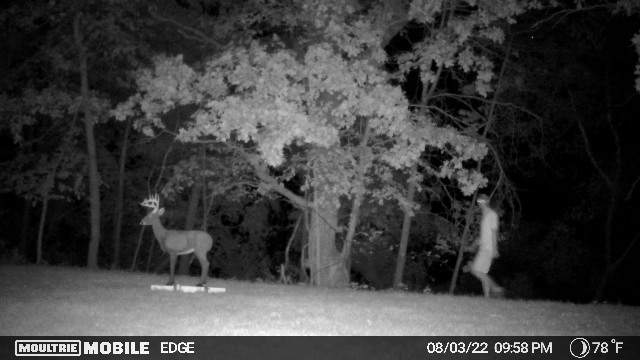

I hung my test camera on a cornfield edge in a core area of our hunting property. According to the app, the highest buck activity for this site is 6 a.m. (I looked through the photos manually to confirm that the app was correct, and it was). Besides time of day, the activity data also accounts for temperature and moon phase. The possibilities for this technology are incredible. With a few cameras running on a hunting property over the course of several seasons, you’d have a powerful data set showing when bucks are moving based on time of season, time of day, temperature, and moon phase. This camera will do more than just pattern a specific buck, it will help you pattern deer activity in your area for a lifetime of good hunting.
The only thing I’d knock the Moultrie Edge on is its slightly slower trigger speed. It had a hard time catching me at the 10 foot walkthrough (I was almost out of frame). However the slower trigger speed didn’t seem to hurt the camera in the field; it captures multiple photos every time a deer walks by. The camera did perform well in the night walkthrough capturing me at the 60-foot range and producing solid nighttime images. -A.R.
Best Standard Cam: Lone Wolf Custom Gear Undercover Trail Camera
Key Features
- Wi-Fi picture retrieval
- 12 megapixels
- 1080p video at 30 frames per second
- 0.4 second trigger speed
- Flash range: 20 feet
- Advertised detection range: 65 feet
- Accepts SD card up to 32 GB
Pros
- The Wi-Fi transfer system is economical and efficient
- The Ultimate Aim Technology and ball joint bracket make setup easy
Cons
- Battery life is below average
- 12MP photos lack clarity
- The night range is average at best
Lone Wolf came up with a solution to breaking sticks to get the camera angle just right: their ball-joint mount. It’s also one of the few budget trail cameras that can Wi-Fi transfer photos to your phone with an app. The app can also organize and store photos based on several filters.
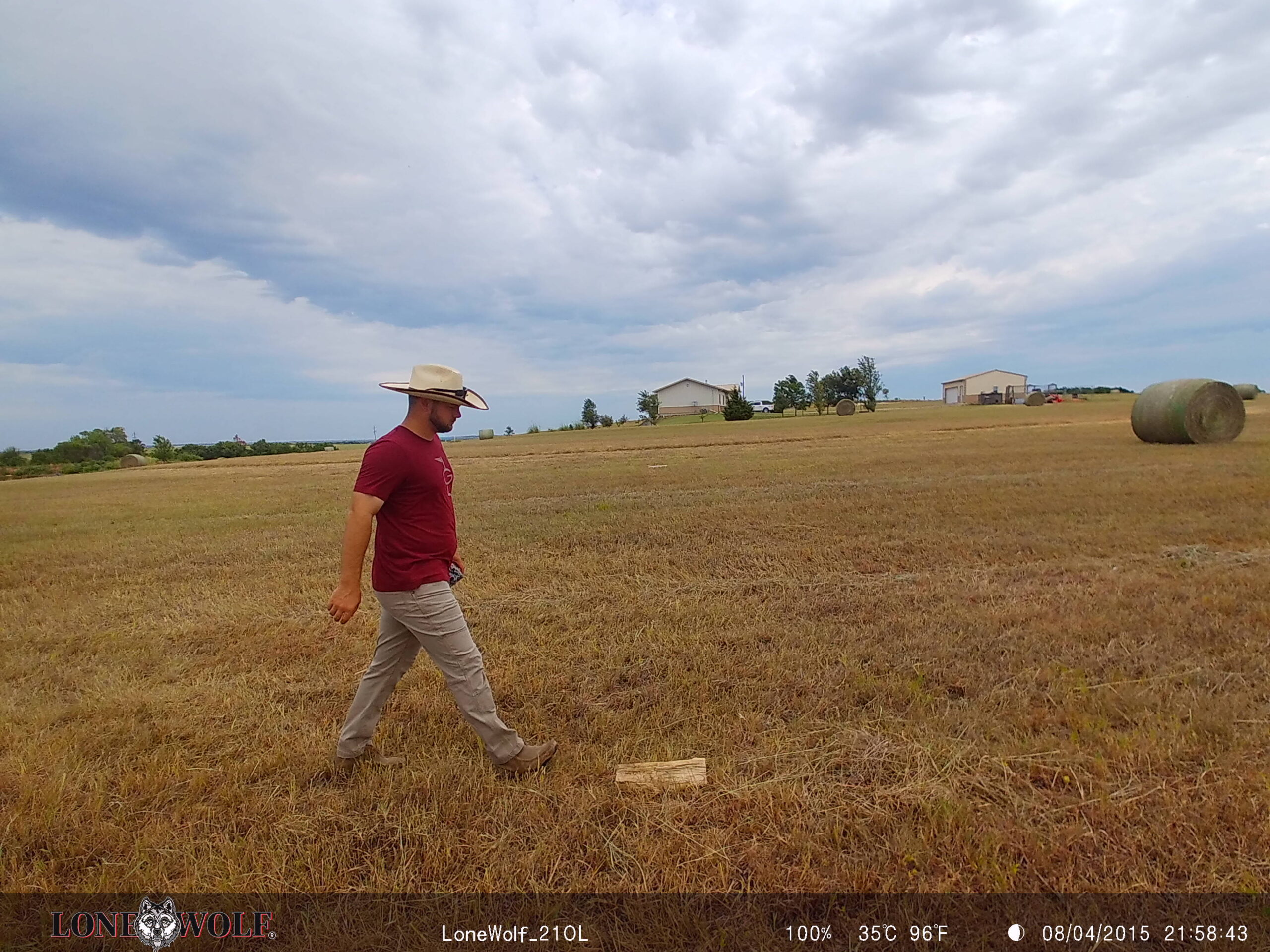
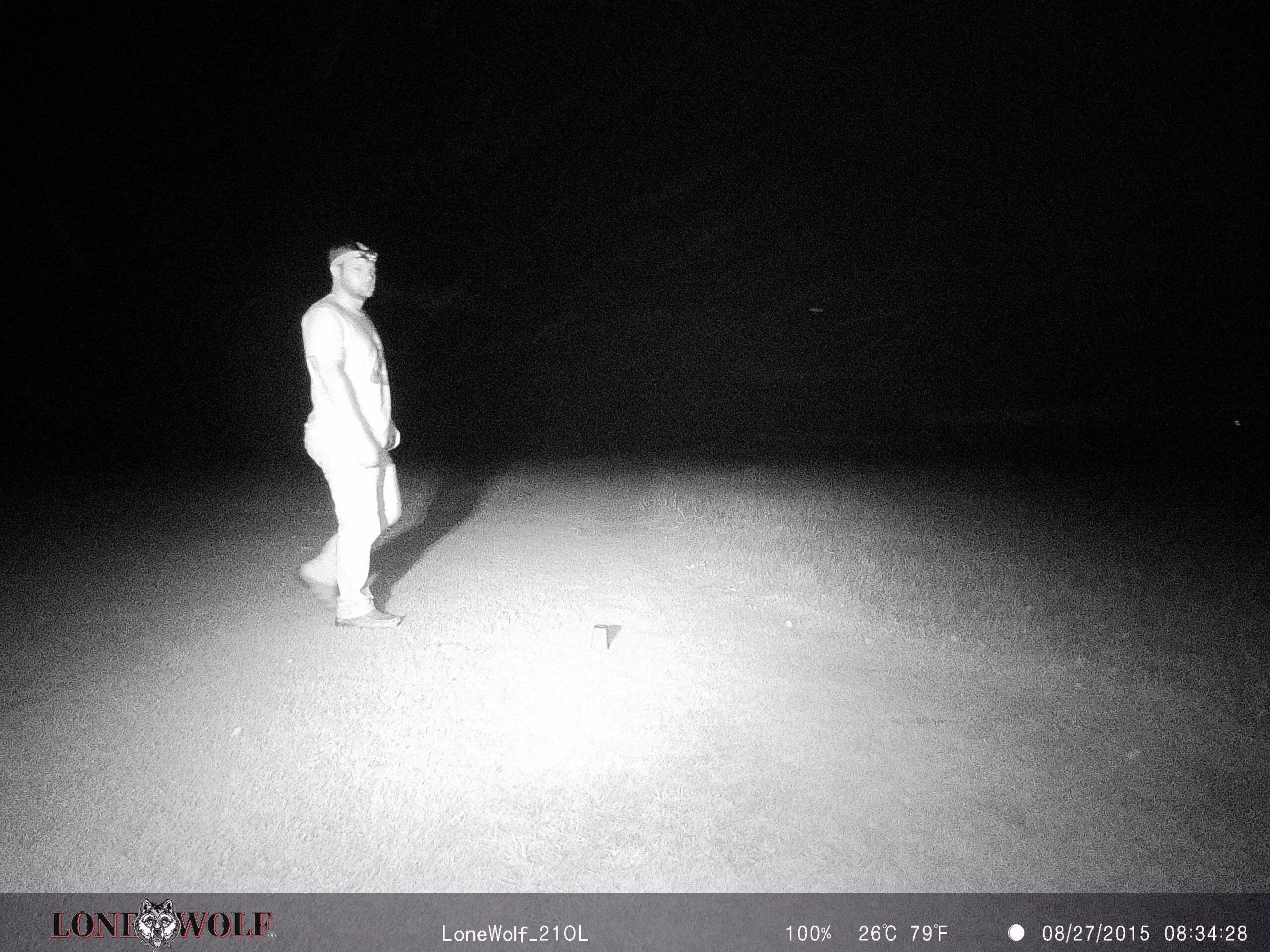
The Undercover’s camera performance was a little disappointing. At 12 megapixels, it’s not going to capture print-quality images for the trophy wall. The battery life on it was iffy past 6,500 images, which is below average compared to many of our other cameras.
The daylight performance of the camera is definitely as advertised with satisfying trigger speeds. It captured me in the center of the frame at the 10-foot distance. The colors were also rich and the image sharp. At night, the camera triggered at 10 feet, but the photo quality was not great. The camera did not trigger at 60 or 110 feet. -D.P.
Best for Under $50: Tasco 12mp Tan Low-Glow
Key Features
- 8 AA batteries
- 12 megapixel images
- 720p video
- 1 second trigger speed, 5 second recovery time
- Flash range: 50 feet
Pros
- Easy setup with only two options for photo/video
- More than 15,000 images on one set of alkaline batteries
- Most retailers sell this camera for under $50
Cons
- Limited function settings
- Can be picky about card sizes/types
- Video lengths can be irregular
I rave to anyone that will listen about these amazing “cheapies.” I’ve had over 50 Tascos in the field over the past 12 months and haven’t had one issue. The simplicity of this camera makes it fast and easy to set up. It has a one or three shot burst mode for photos, and multiple interval adjustments. The only downfall I’ve found is that the videos can be irregular in their length, which cuts off some activity.
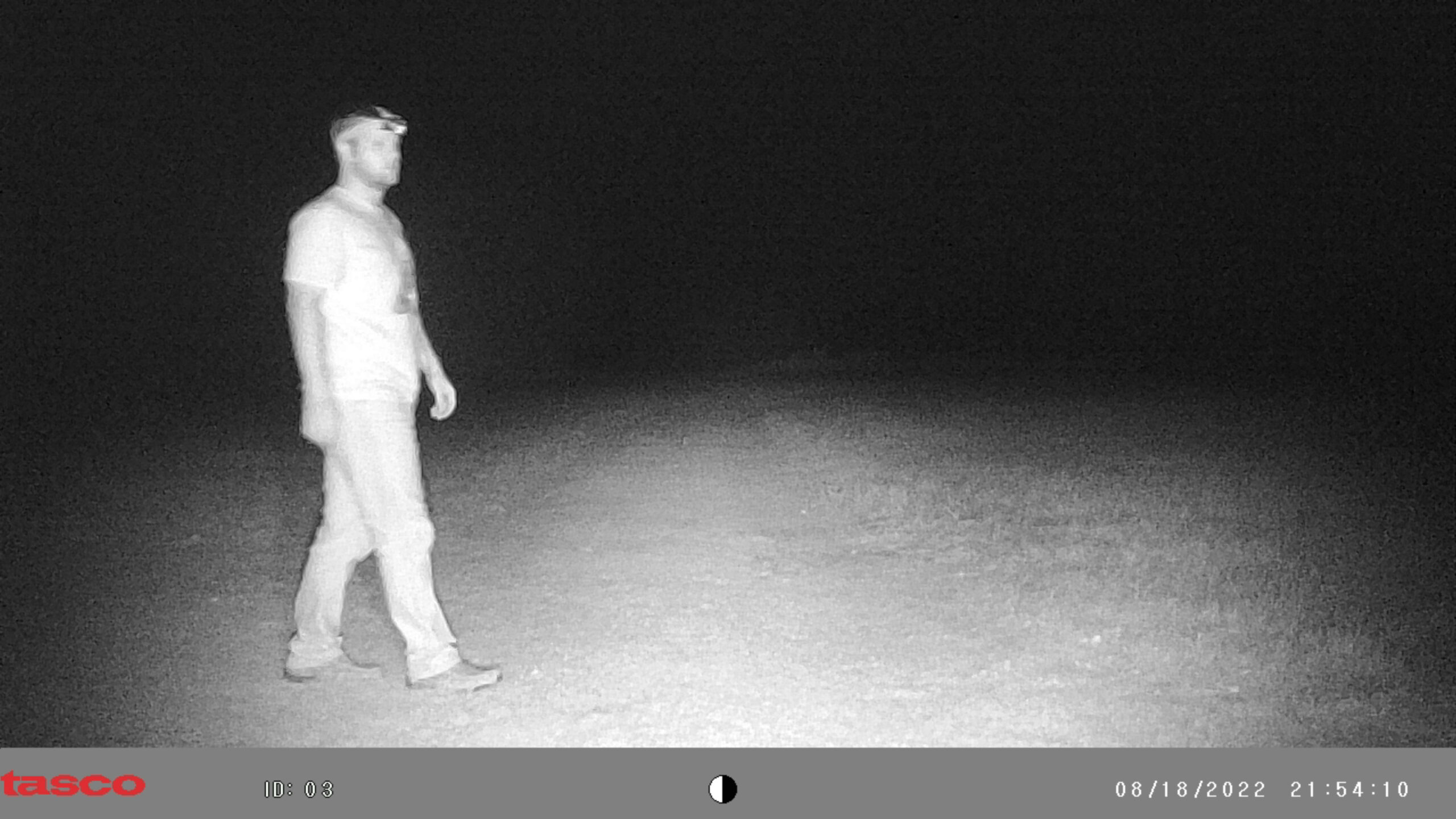
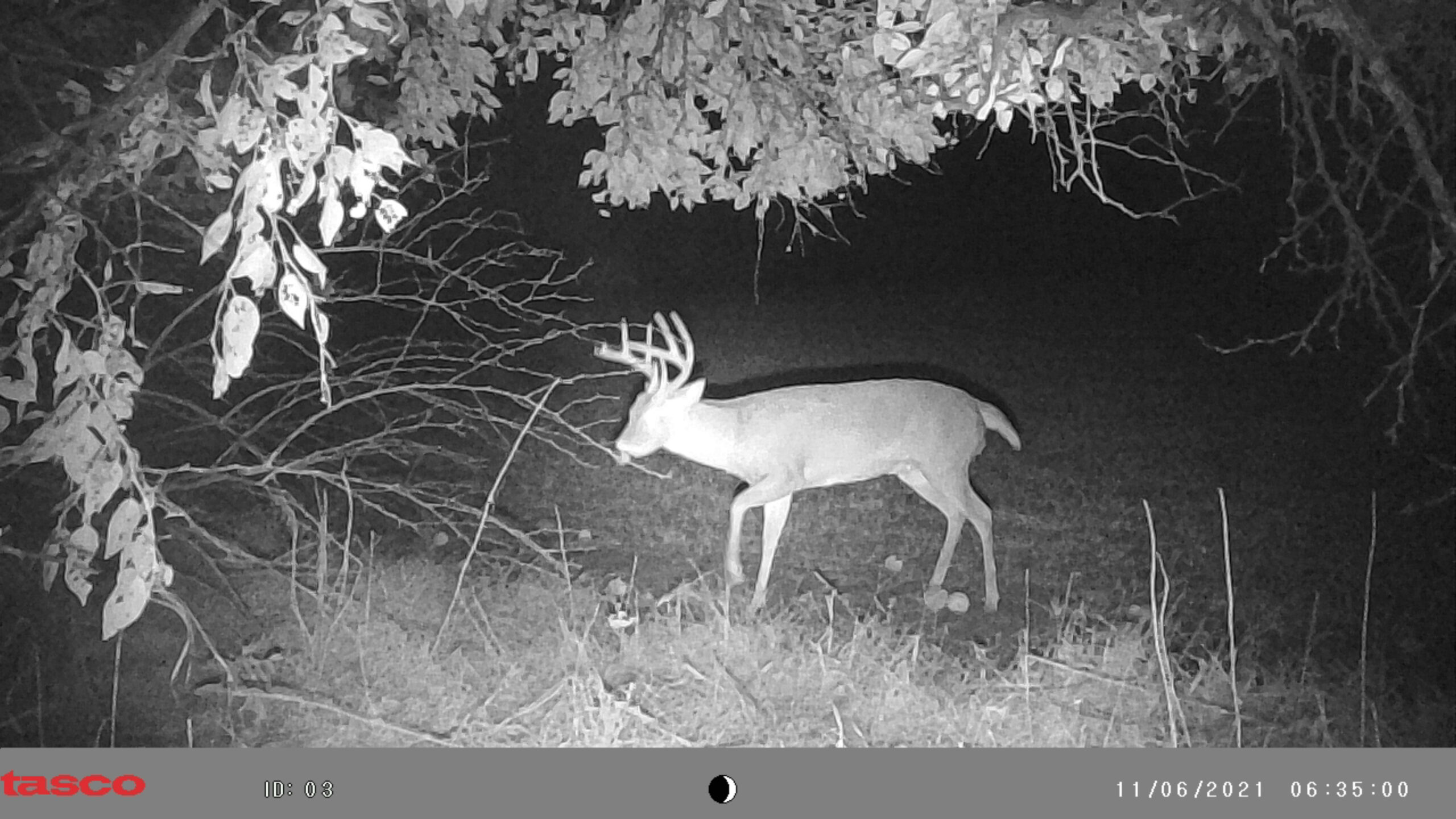
I was truly shocked at the 50 feet of flash range for a budget trail camera around $50. In my walkthrough test it captured me in the center of the frame at 10 feet both day and night. It didn’t trigger at 60 or 100 feet. I operate almost all my Tascos on three shot bursts, and on several occasions they captured deer running in all three frames. For the price and performance, these are my personal choice for mapping properties and putting patterns together. -D.P.
Best Image Quality: Tactacam Reveal X and XB
Key Features
- 12 AA Batteries
- Less than 0.5 second trigger speed
- Flash range: 80 feet (XB) and 96 feet (X)
- Advertised detection range: 96 feet
- LTE/4G wireless module
- 12 AA Batteries
- IP66 waterproof certified
- External port for solar panel
Pros
- Reliable
- Simple to set up
- Solid photo quality
Cons
- Cell data plans are expensive per camera
- Requires a class 10 U3 SD Card
- Limited HD downloads on the app
The Tactacam Reveal X and Reveal XB cameras combine all of the features that most hunters want in a cell camera, at a price we can all still afford. Let’s start with image quality, which is the backbone of both cameras. Over the thousands of images we scoured, only extreme fog defeated this camera. The XB took beautiful daytime photos on a property in Wisconsin, and the X recorded thousands of quality photos in Kansas.
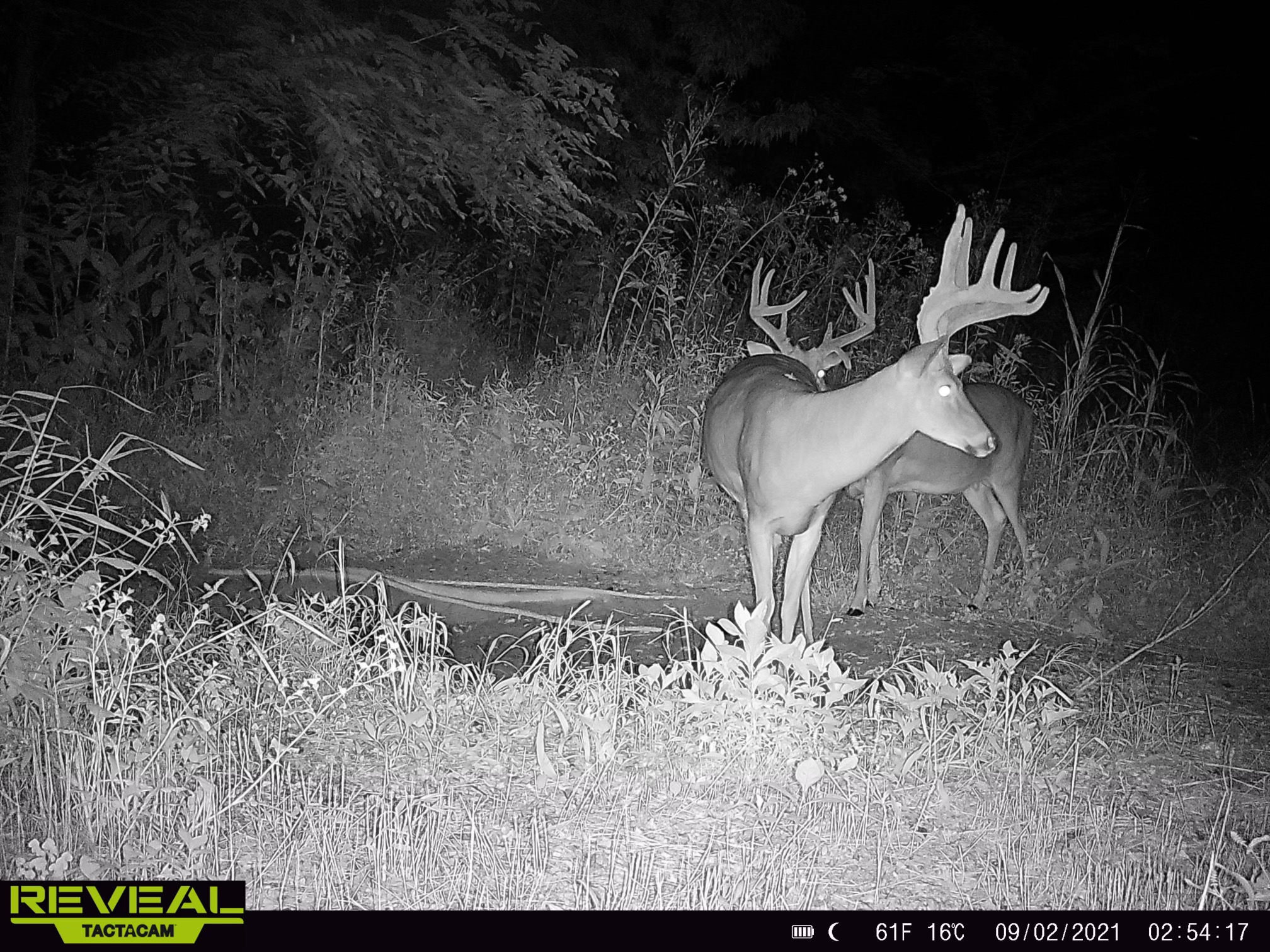
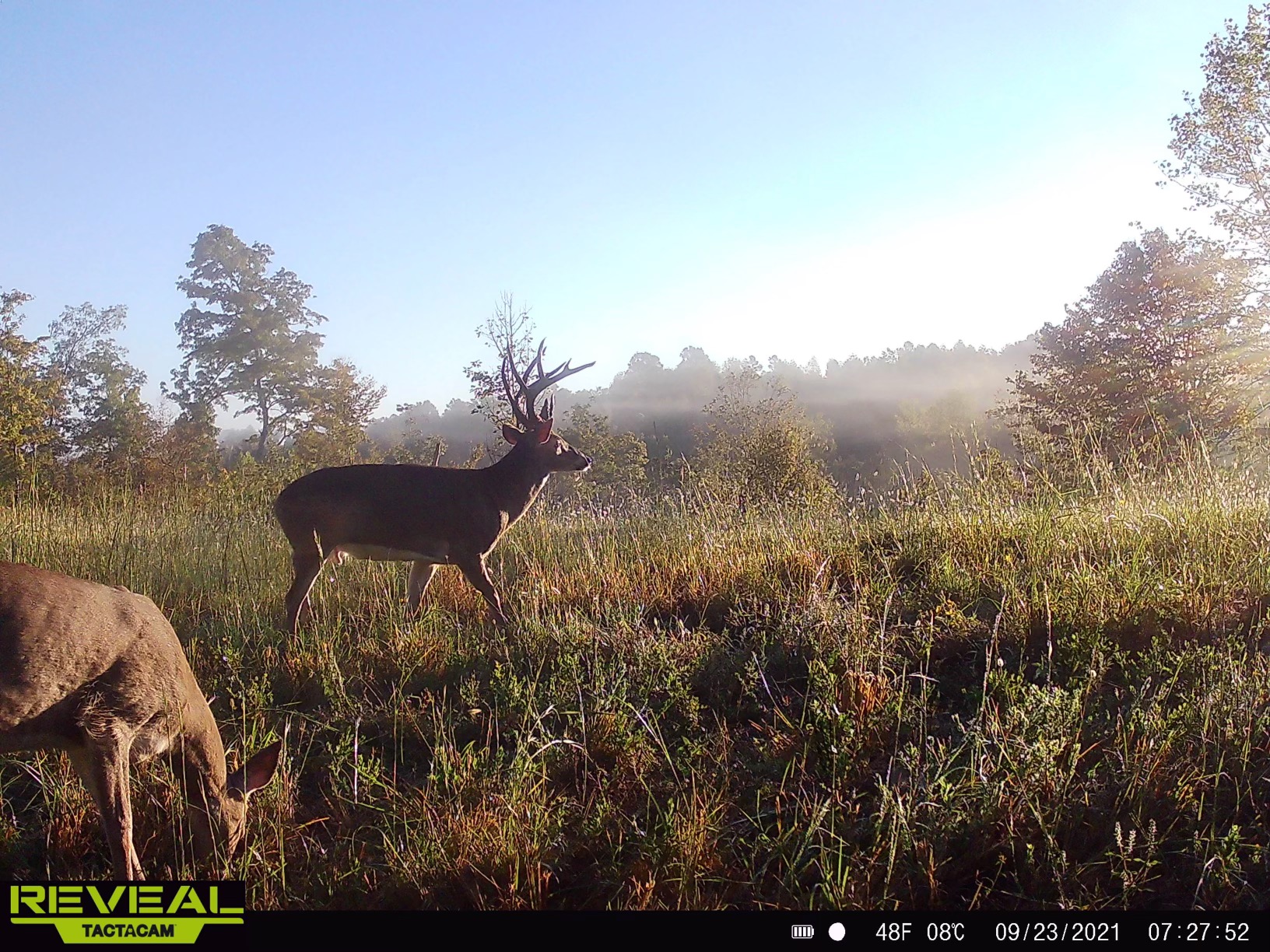
The two cameras are very similar. The Reveal X is a “low glow” camera, meaning it emits a red light while taking nighttime photos. The XB is a “no glow” camera, meaning it emits no visible flash while taking nighttime photos. As you can see in our images, the XB no glow photos are on par with the X’s low glow photos. Beyond that, XB has an integrated GPS, so you can see where the camera located within the Tactacam app. The XB is a little pricier, but there are often online deals that bring it down to the same price point as the X.
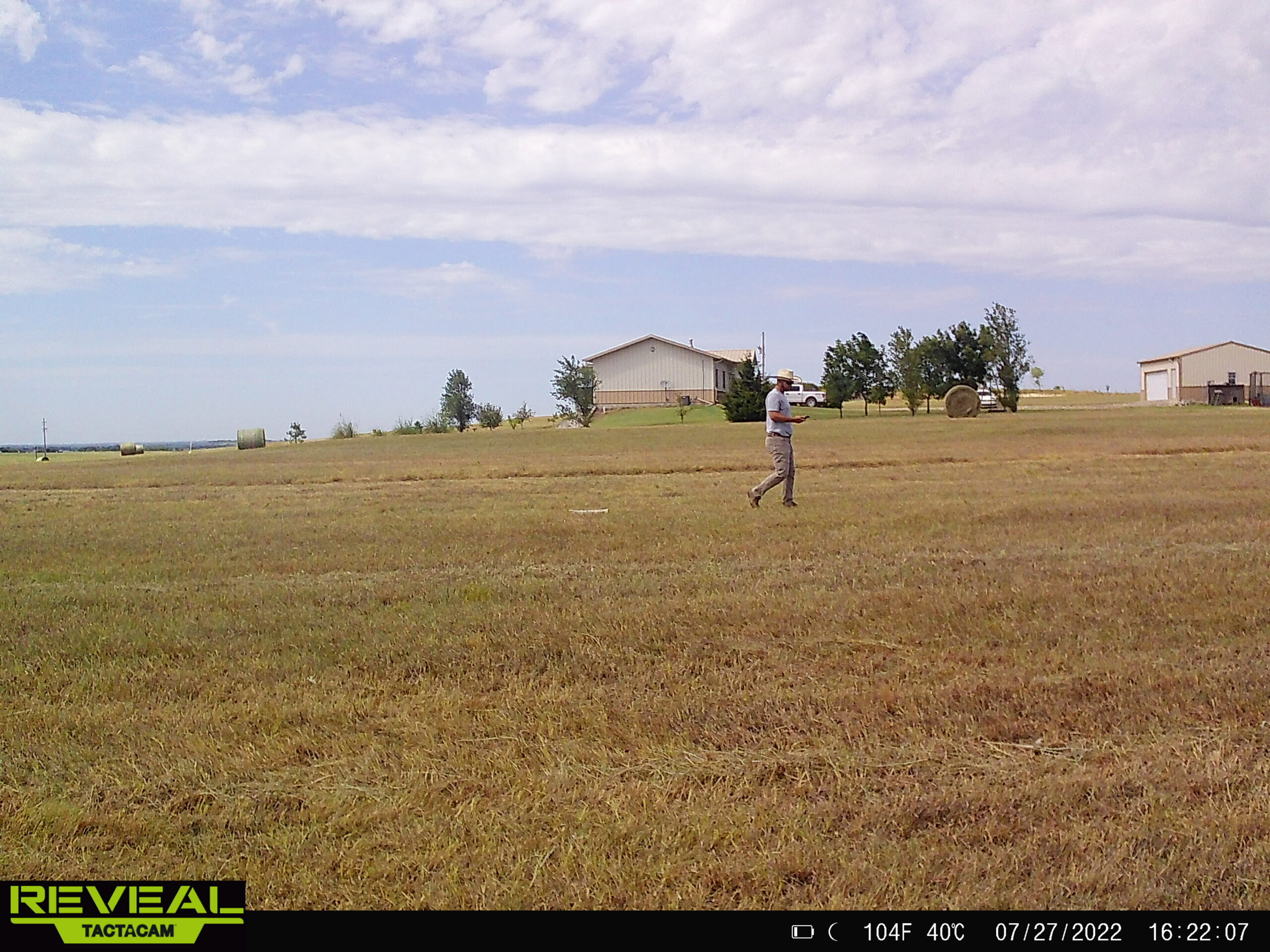
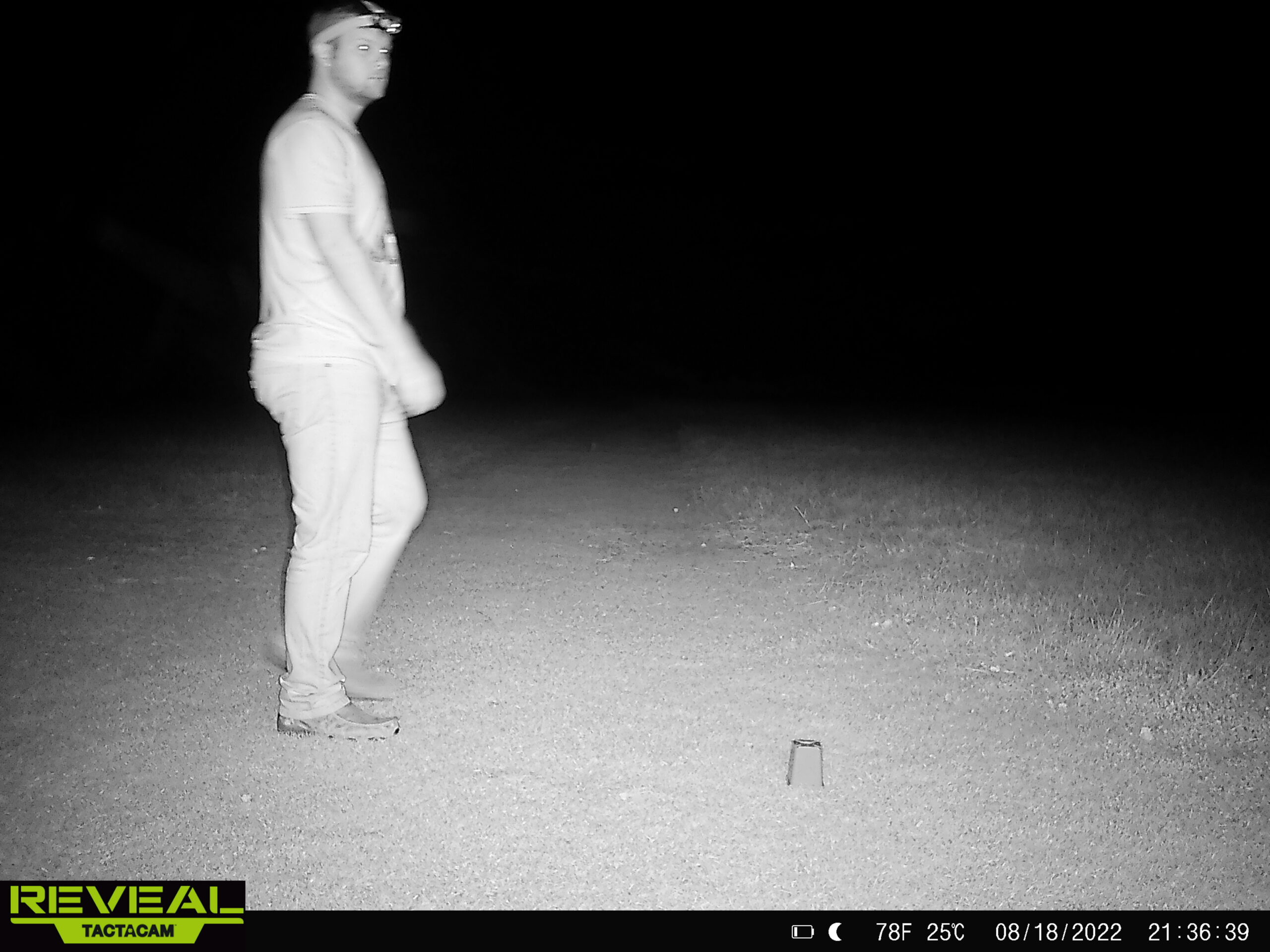
The megapixel modes of 8,12, or 24 create versatility for folks who want to make a set of lithium batteries last 12 months. The only downfall of the camera is that if you own more than one, there is no way to set up different plans under the same account for different cameras. So, if you want one camera to have unlimited photos and another to have limited photos, you have to create different accounts for each trail cam.
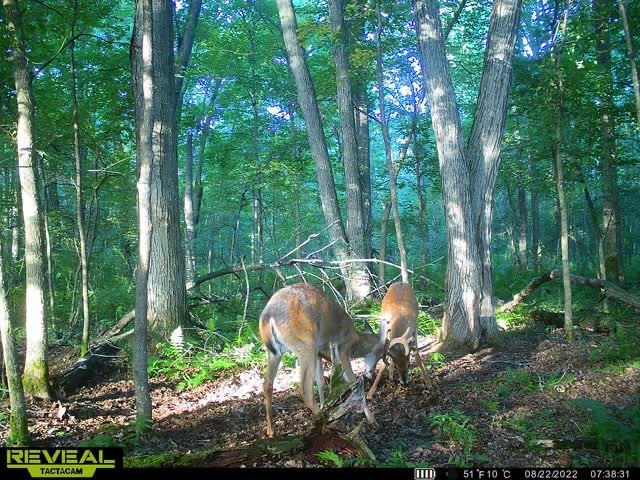
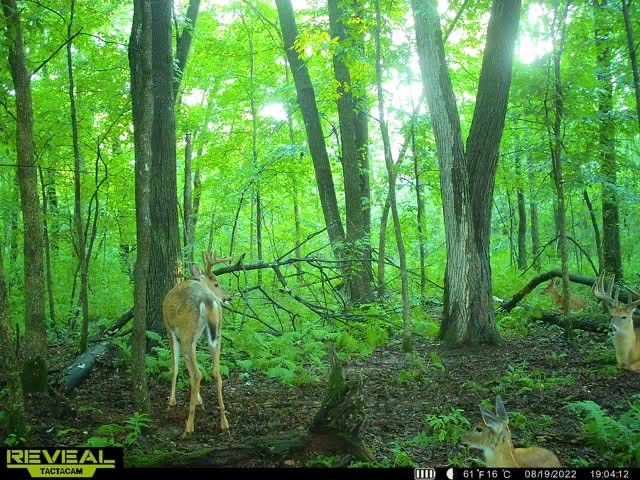
At $120 this is one of the best budget trail cameras out there. In our walkthrough test, the X triggered out to 60 feet, however at night it only triggered at the close distance. The XB triggered at 60 feet during both day and night walkthroughs. -A.R., D.P.
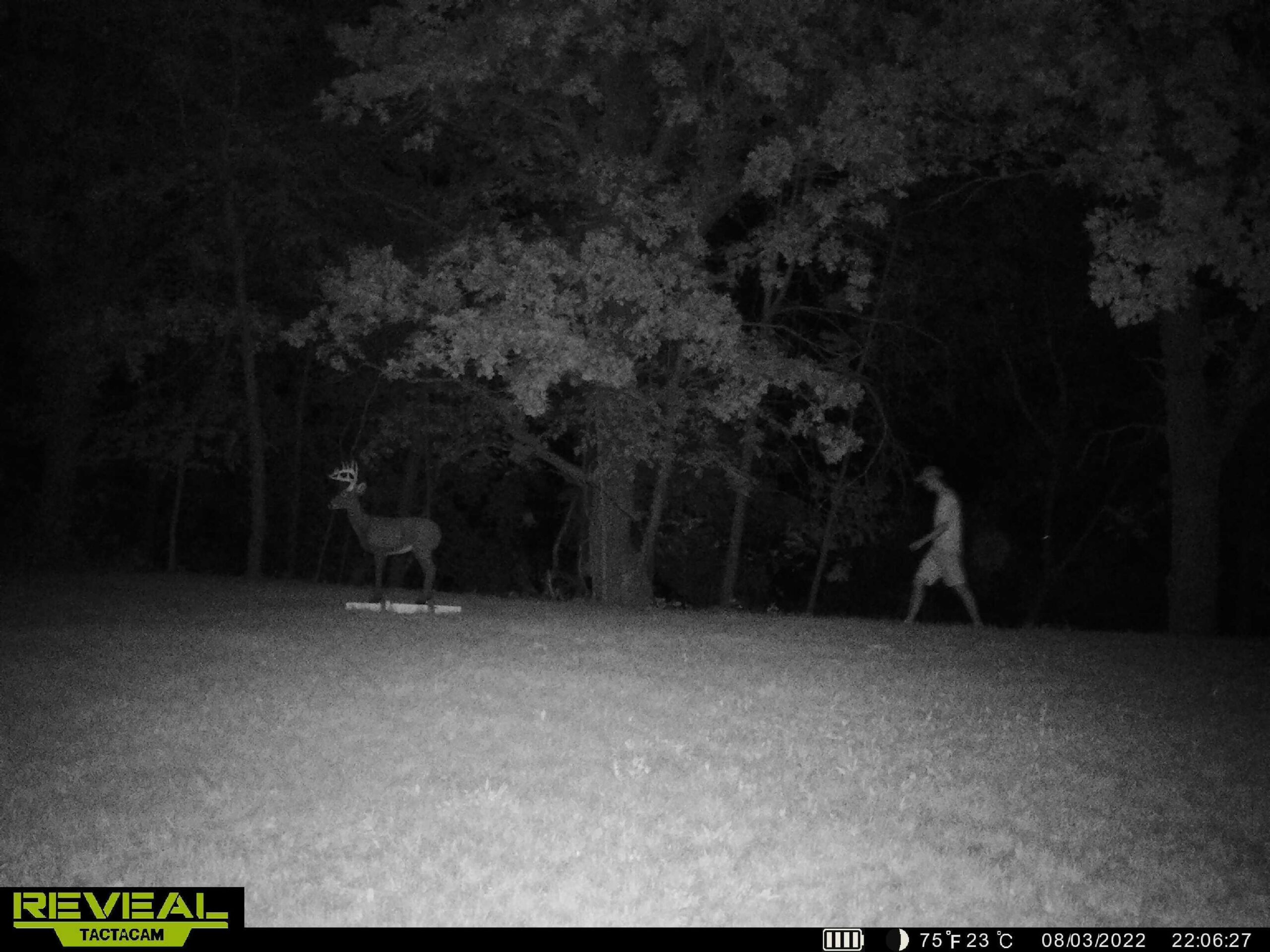
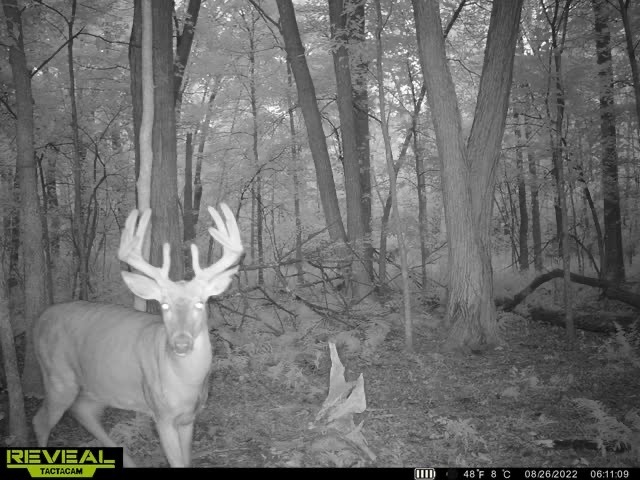
Key Features
- 12 AA
- Less than one second trigger speed
- Advertised detection range: 80 feet
- Accepts up to 32 GB SD card
- Low glow
- 20 MP photo and HD video
Pros
- Easy-to-use app
- Triggered at 60 feet at night
- Customizable flash
- Solar compatible
Cons
- Inconsistent triggering at far distances
Cell cameras used to be expensive pieces of tech, but they’re now becoming affordable and offering a lot of value for the money. One of the best buys in cell cams is the Bushnell Cellucore 20 with its 20 MP photos, customizable low glow flash, and easy-to-use app.
During the walk-through test, the Cellucore triggered at 10 feet with a perfectly centered photo—day and night. The camera didn’t capture me at 60 or 100 feet during the day, but at night it captured a series of five photos of me walking at 60 feet.

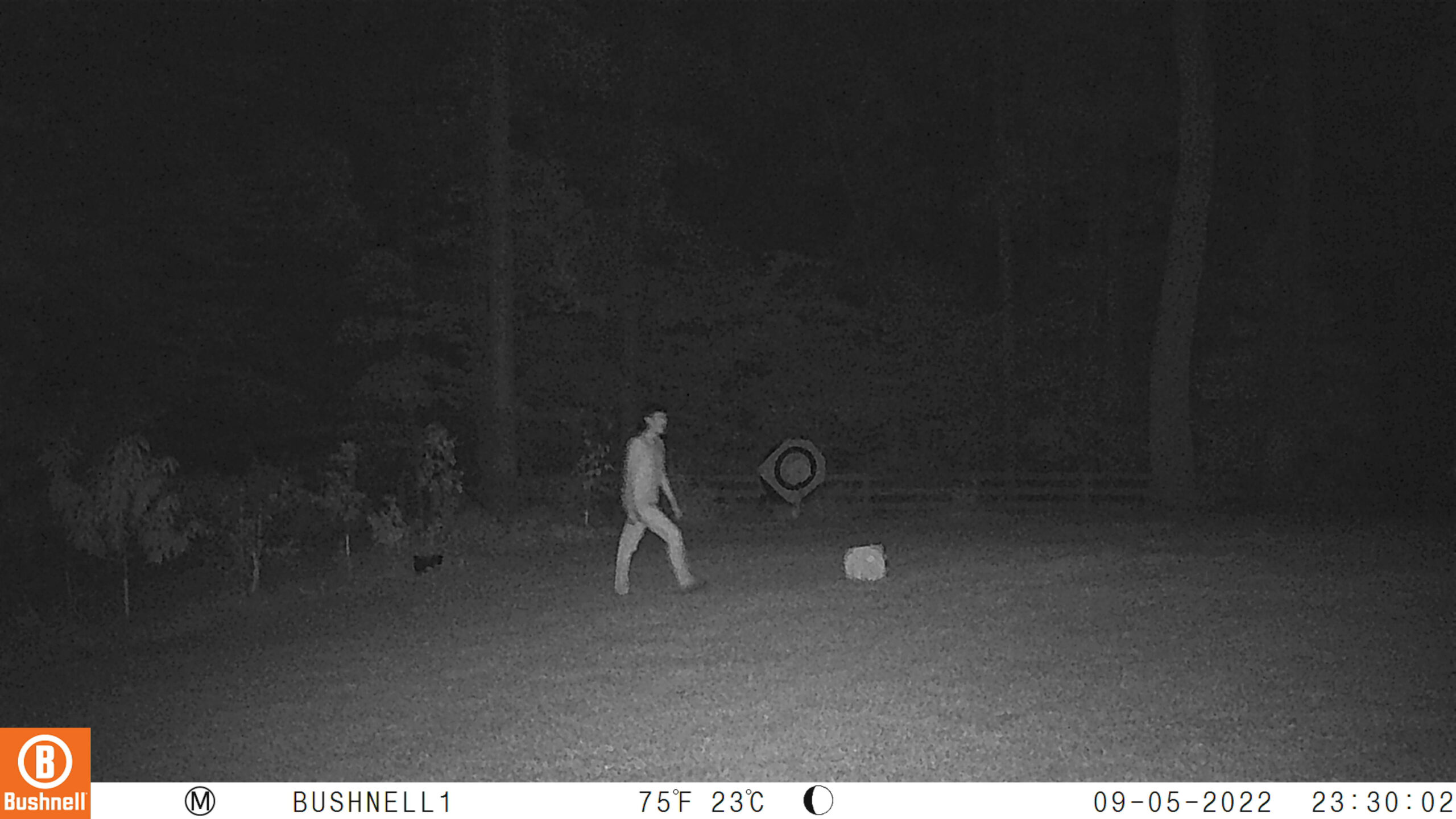
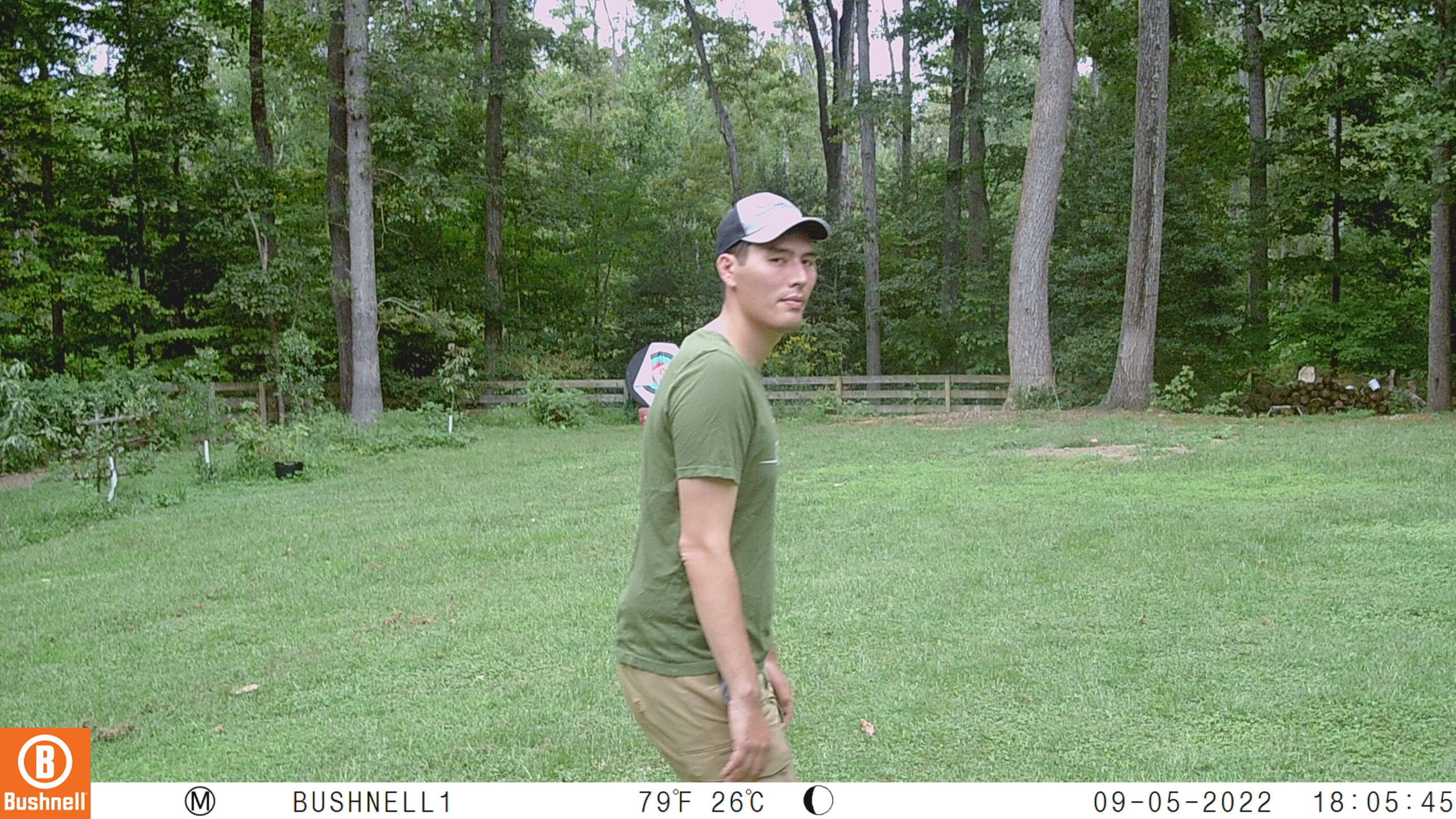
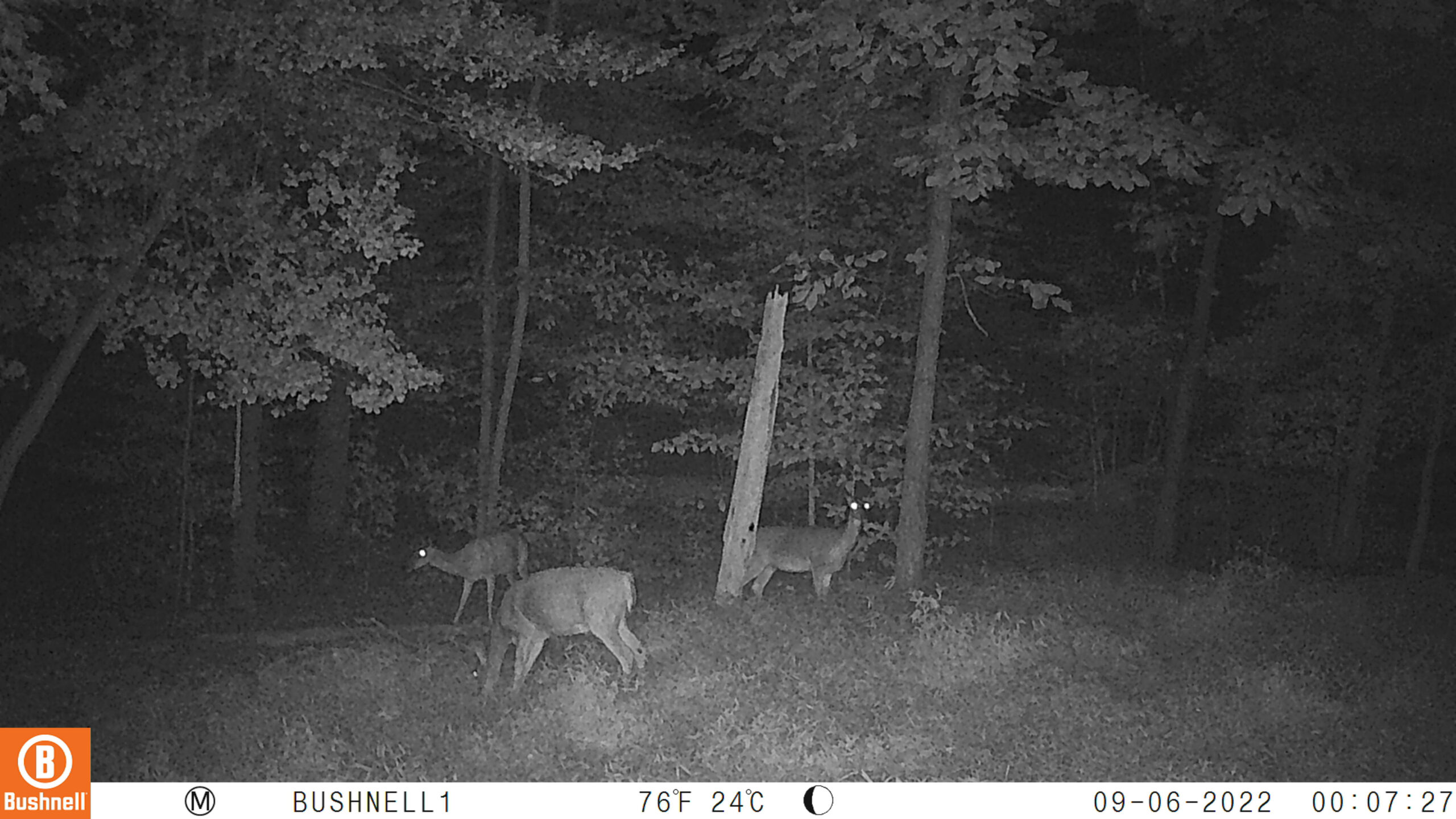
The Cellucore has three flash settings: short range, fast motion, and long range. I used the long-range flash setting during the walk-through test and it illuminated out to 43 yards. The downside of the long-range flash is that close objects will be over exposed. For my in-the-field test, I used the fast-motion flash and it produced evenly illuminated photos with good detail from 5 to 15 yards. It also captured several deer walking without much movement blur.
The daytime image quality was fair with good color and detail as well as no motion blur. At night, the photos had good black and white contrast with even exposure when using the fast-motion flash. -S.E.
Key Features
- 8 AA batteries
- 0.5 second trigger speed
- Flash range: 100 feet
- Advertised detection range: 100 feet
- 0.3 second trigger speed
- 33 Megapixels
- 1080p video with sound
- 2 SIM cards included
Pros
- Good videos
- Good night photos
- Easy to use
- GPS enabled
Cons
- Receiving full HD video costs extra
The latest trend in cell cams is the ability to automatically choose the network with the strongest signal. It’s a feature you’ll find on expensive cameras, but it’s cool to see it in the SpyPoint Flex, which retails around $130. I’ve had a Flex for one month and moved it between travel corridors, mock scrapes, and feeding areas. While it’s nearly twice the price of some of the cheaper options in the best budget trail cameras test, it brings plenty of performance to justify the price.
That improved performance was evident during the walkthrough test. At 10 feet in daylight and night the camera captured three photos of me in frame. During daylight it caught me in frame three times at 60 feet, but it did not capture me at night. The camera did not trigger at 110 feet.
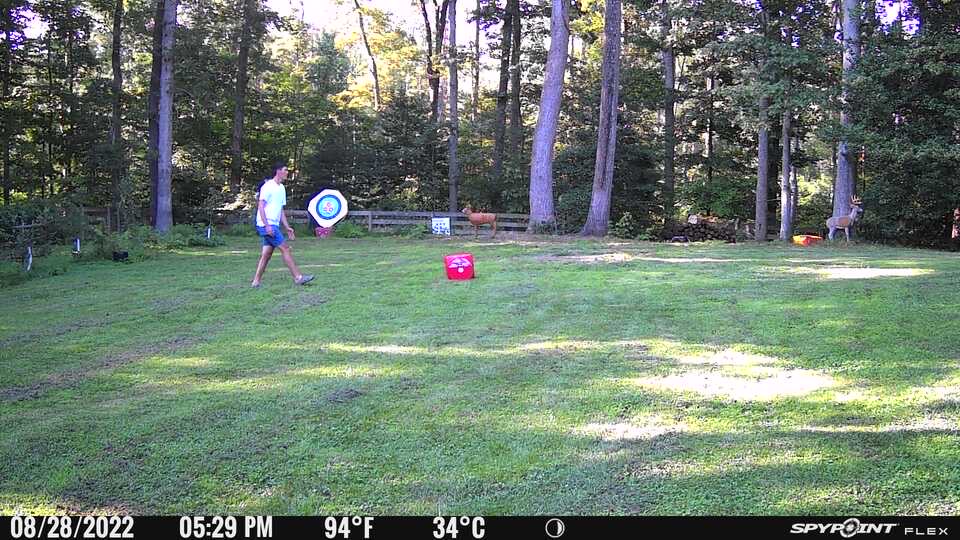
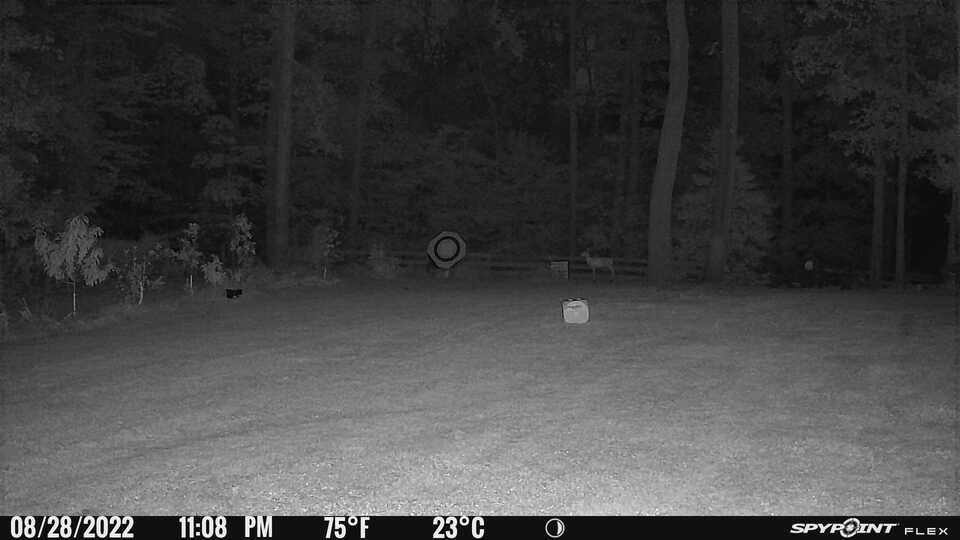
The Flex’s photo quality is excellent—day or night. The video quality is also great and the addition of audio to the video is a cool feature. But SpyPoint charges an additional fee to send the full 15 second video to your phone. If you don’t pay the fee, you get the equivalent of a flip-book video. Another thing to keep in mind is that sending a lot of video will hurt your battery life. -S.E.
SpyPoint Link Micro LTE
Key Features
- 8 AA batteries
- 0.5 second trigger speed
- Flash range: 80 feet
- Advertised detection range: 80 feet
- 10 Megapixels
- LTE cellular network
Pros
Cons
- Inconsistent detection
- Not recommended for trails
I had a Link Micro LTE set up under dropping oaks throughout the 2021 season. I didn’t need a camera with excellent photo resolution; I just needed to know when the deer were hitting those acorns. The Link Micro worked well for that purpose. This year I placed it on a trail that leads to a food source and I have a lot more blanks or pictures of tails.

During the walkthrough test, I got one photo where I was in frame at the 10 foot mark and a couple blanks—both day and night. At 60 feet the camera triggered during daylight, but I wasn’t in the photo and it did not trigger at 110 feet. At night, the camera did not trigger at 60 feet or 110 feet.
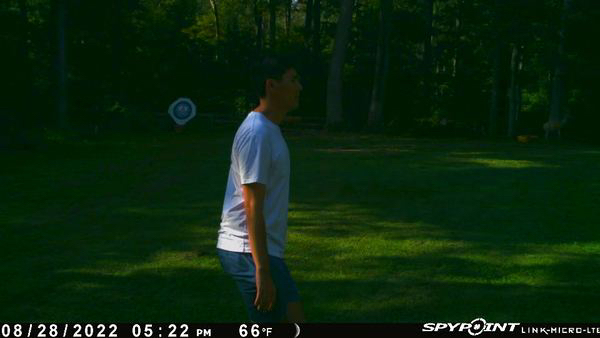
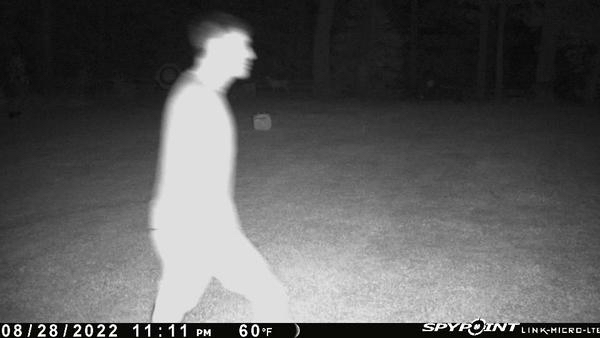
The Link Micro’s photo quality is OK. The daylight photos are sometimes under or over exposed—especially during dawn and dusk. The night time resolution is good enough to count tines, but don’t plan on zooming in and retaining photo resolution. -S.E.
How to Choose the Best Budget Trail Camera
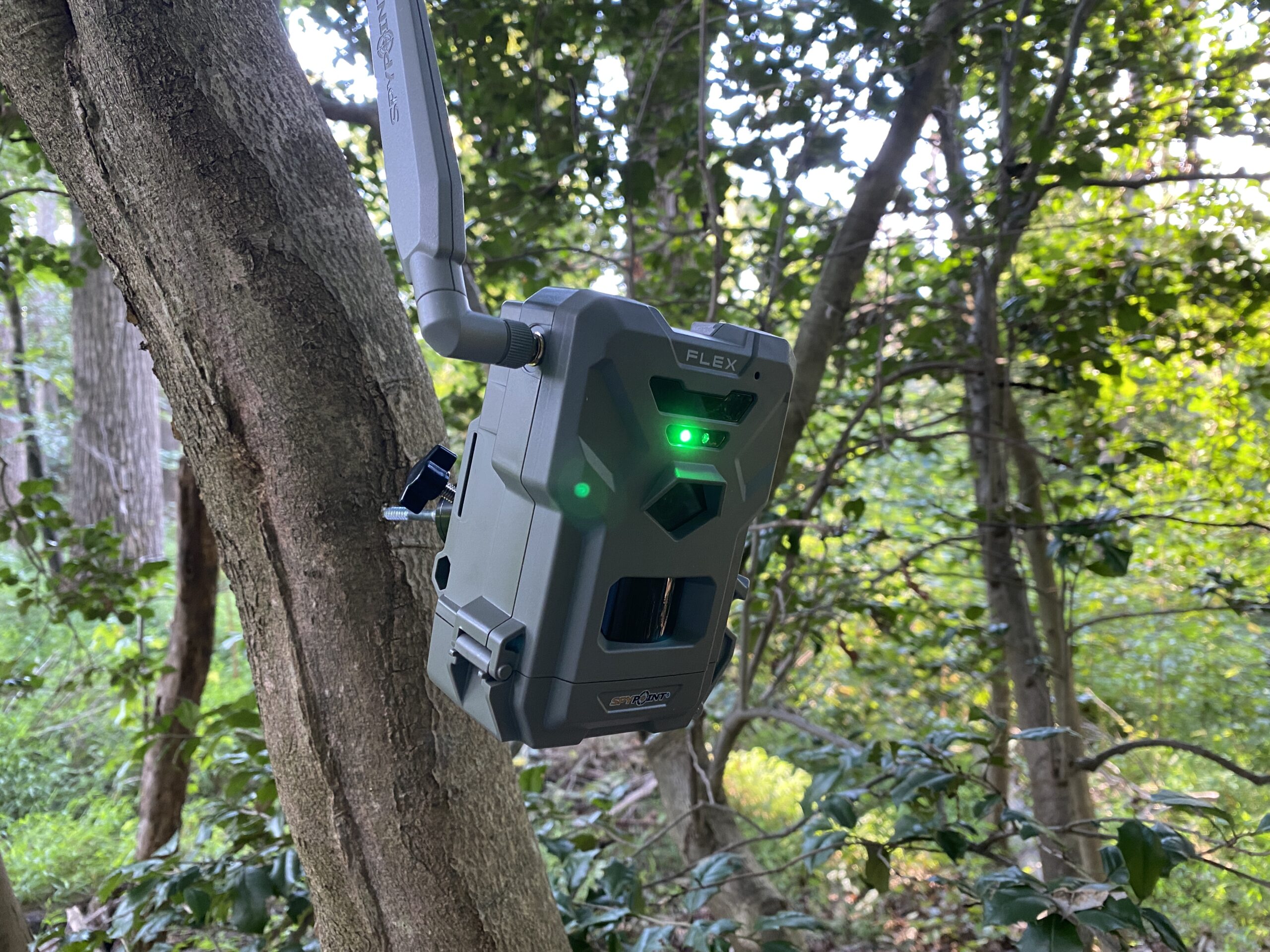
Flash and Detection Range
If your cameras are mostly tucked into thick cover, then you don’t need a camera with a long flash and detection range. But, if your camera is overlooking a clearcut or open field, then good flash and detection range are a must.
Photo Quality
Even if you don’t care about naming deer or counting every tine, a quality image is still nice to have. Whether you’re sharing trail cam photos or you capture a crazy wildlife moment, you’ll be glad you have a crisp clear picture. Image quality is about much more than advertised megapixel capacity. In fact, more megapixels doesn’t necessarily mean better images. Instead, it’s more useful to look at sample images (our review is a good start) to see the image quality that each camera produces. For daytime photos, look for detail in the background, where big bucks tend to lurk. In nighttime photos, look for the camera to stop motion. You want to see a clear picture of the buck (or in our case, the tester) as he walks across the frame, not a blurry white shape.
Trigger Speed
If you have the camera on a trail, a fast trigger speed is more likely to capture a walking deer. That’s why we do the walkthrough test for each camera. Despite what each company advertised, the cameras that caught us in the middle of the frame at close range have the most effective trigger speed in the field.
FAQs
Q: What’s the difference between a Wi-Fi trail camera and a cellular trail camera?
Wi-Fi trail cameras send images over a wireless network to your phone or a homebase. Their transmission range is limited, but they are still much easier than manually importing images with an SD card. A cellular trail camera sends images to an app through the cellular network. So, your camera could be on the other side of the country and you can still monitor photos in real time.
Q: How far can a trail camera take a picture?
The best trail cameras can take photos day and night at 110 feet, but most trail cameras will reliably take photos between 40 and 60 feet. Based on our field testing, the best distance for solid trail camera photos is about 10 yards (or 30 feet). Any closer, and you risk missing a fast-moving deer. Any farther and there’s a chance that some of budget trail cameras won’t trigger. Keep this in mind when picking camera sites.
Q: How much do trail cameras cost?
Trail cameras can cost from $30 to over $600. Most hunters will find the best bang for their buck in the $100 to $200 price range.
Final Thoughts on the Best Budget Trail Camears
The original trail cameras used film and giant lantern batteries. Some of them were just disposable cameras linked to a motion sensor in a waterproof housing. In 2009, trail cameras became smaller and had IR flash, but still were only 5 megapixels at most and those top-of-the-line models cost around $600. The $50 Tasco in this review would blow those cameras out of the water with its features and performance.
You get a lot of camera for your money these days and you don’t need to spend a wad of cash on a fleet of cameras. Whether you need a standard or cell cam, there are plenty of options within the best budget trail cameras to find one that’s right for you.

